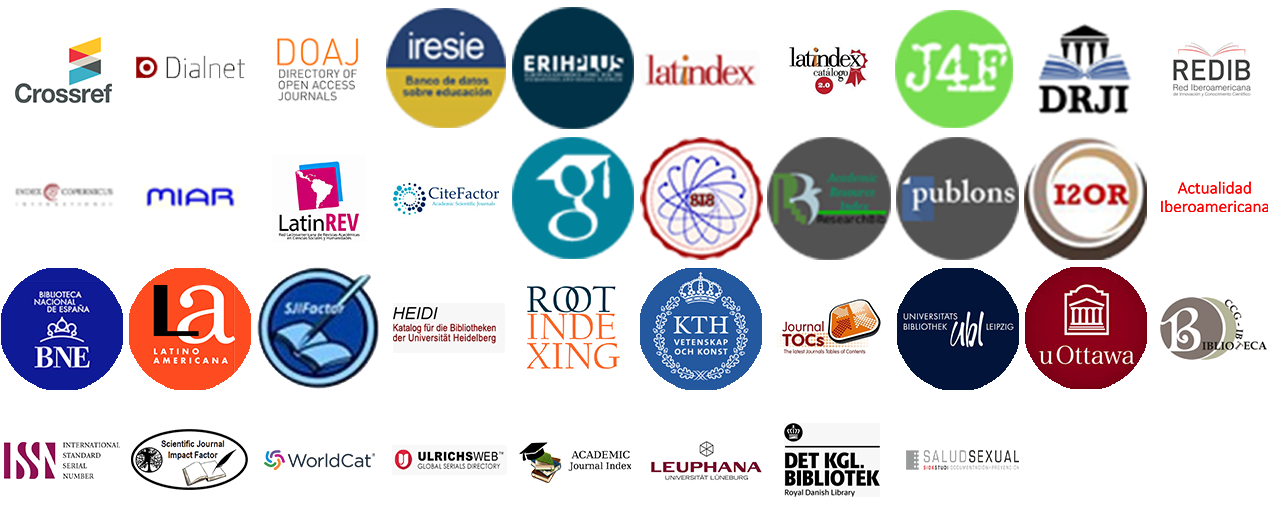The human right to the family and the Federal Maritime Terrestrial Zone in Mexico, towards its respect for the safeguarding of fundamental rights: Mazatlán Sinaloa case.
DOI:
https://doi.org/10.36825/RITI.11.24.003Keywords:
ZOFEMAT, Family, Construction, Human Right, Regulation, GNSS, Image ProcessingAbstract
The human right to the family was analyzed as a motor right or facilitator of other human rights such as recreation and healthy recreation, as well as the best interests of the minor established in international treaties and in the Magna Carta, whose compliance must be guaranteed by the State. , which can be violated by human activity such as the construction industry in the federal beach zone, particularly in the Federal Maritime Terrestrial Zone, regulated by the General Law of National Assets and the Regulations for the Use and Exploitation of the Territorial Sea, Waterways, Beaches, Federal Maritime Terrestrial Zone and Land Reclaimed from the Sea. Through field work with the realization of various studies and the appropriate methodology by the science of Civil Engineering with a topobatrimetric and photogrammetric survey with due information processing, it was shown that in the municipality of Mazatlán, particularly Punta Camarón-Punta Sábalo beach in the coastal zone, all the constructions of the hotel, restaurant or residence branch violate the laws that delimit the federal zone, limiting access and its time reducing the beach area, violating the aforementioned human and fundamental rights.
References
Díaz-de la Fuente, S., Ahedo, V., Caro, J., Pereda, M., Santos, J. I., Galán, J. M (2020). Análisis de la multidisciplinariedad de la investigación en España mediante la red de proyectos de I+D+I coordinados. En J. Caro Sainz, S. Díaz de la Fuente, V. Ahedo García, D. Zurro Hernández, M. Madella, J, M. Galán Ordax, L. R. Izquierdo Millán, J. I. Santos Martín, R. del Olmo Martínez (Eds.), Libro blanco sobre transdiciplinariedad y nuevas formas de investigación en el sistema espalo de ciencia y tecnología. PressBooks. http://hdl.handle.net/10259/5482
Villarreal Armengol, C. (2020). Los métodos en la investigación jurídica. En E. Cáceres Nieto (Coord.) Pasos hacia una revolución en la enseñanza del derecho en el sistema romano-germánico, tomo 4. Instituto de Investigaciones Jurídicas UNAM. https://archivos.juridicas.unam.mx/www/bjv/libros/13/6226/12a.pdf
Perico-Granados, N., Galarza, E. Y. Díaz Ochoa, M. L., Arévalo-Algarra, H. M., Perico-Martínez, N. R. (2020). Guía práctica de investigación en ingeniería: apoyo a la formación de docentes y estudiantes. Corporación Universitaria Minuto de Dios, Uniminuto. https://hdl.handle.net/10656/10822
Fraguas Madura, L. (2015). El concepto de derechos fundamentales y la generación de derechos. Anuario del Centro de la Universidad Nacional de Educación a Distancia en Calatayud, (21), 117-136. http://www.calatayud.uned.es/web/actividades/revista-anales/21/03-05-LourdesFraguasMadurga.pdf
Organización de las Naciones Unidas. (1948). Declaración Universal de los Derechos Humanos. https://www.un.org/es/about-us/universal-declaration-of-human-rights
Carpizo, J. (2011). Los derechos humanos: su naturaleza, denominación y características. Cuestiones constitucionales, (25). https://www.scielo.org.mx/scielo.php?script=sci_arttext&pid=S1405-91932011000200001
Constitución Política de los Estados Unidos Mexicanos. (2022). H. Congreso de la Unión. https://www.diputados.gob.mx/LeyesBiblio/pdf/CPEUM.pdf
Bernal Suárez, J. B. (2017). Derecho humano a la familia. Retos y alcances en el siglo XXI. Editorial Gedisa y Universidad Autónoma del Estado de México. http://ri.uaemex.mx/bitstream/handle/20.500.11799/94497/DERECHO%20HUMANO%20FAMILIA.pdf?sequence=1&isAllowed=y
Uribe Arzate E., Bustamante-Medrano, M. G. (2019). Notas sobre el derecho humano a la familia como derecho motor para el ejercicio de otros derechos humanos. Revista Vniversitas, (138). https://doi.org/10.11144/Javeriana.vj138.ndhf
Chávez Asencio, M. F. (2022). Derechos familiares fundamentales. Jurídica, anuario del departamento de derecho de la Universidad Iberoamericana, (32), 185-201. https://revistas-colaboracion.juridicas.unam.mx/index.php/juridica/article/view/11475/10511
Transparencia Fiscal. (2015). Sistema Desarrollo Integral de la Familia del Estado de México.
Mora Donatto, C. J. (2011). Derecho al esparcimiento. Instituto de Investigaciones Jurídicas, UNAM. https://repositorio.unam.mx/contenidos/5025786
Ley General de Bienes Nacionales. (2021). H. Congreso de la Unión. https://www.diputados.gob.mx/LeyesBiblio/pdf/LGBN.pdf
PROFEPA. (1991). Reglamento para el uso y aprovechamiento del mar territorial, vías navegables, playas, zona federal marítimo terrestre y terrenos ganados al mar. https://www.profepa.gob.mx/innovaportal/file/3668/1/reglamento__zofemat.pdf
H. Ayuntamiento de Mazatlán. (2006). Reglamento de construcción del municipio de Mazatlán. http://gaceta.mazatlan.gob.mx/wp-content/uploads/2023/02/REGLAMENTO-DE-CONSTRUCCI%C3%93N-DEL-MUNICIPIO-DE-MAZATL%C3%81N-POE-06-febrero-2023-016-III.pdf
Aguilar Calderón, P.A., Aguilar Calderón, J. A. (2019). La viabilidad de la implementación del matrimonio virtual en Sinaloa. Revista de Investigación en Tecnologías de la Información (RITI), 7 (13), 126-132. https://riti.es/index.php/riti/article/view/131/153
Suárez Palacio, P. A., Vélez Munera, M. (2018). El papel de la familia en el desarrollo social del niño: una
mirada desde la afectividad, la comunicación familiar y estilos de educación parental. Revista Psicoespaocios, 12 (20), 173- 198. https://doi.org/10.25057/21452776.1046
Downloads
Published
How to Cite
Issue
Section
License
Copyright (c) 2023 Revista de Investigación en Tecnologías de la Información

This work is licensed under a Creative Commons Attribution-NonCommercial 4.0 International License.
Esta revista proporciona un acceso abierto a su contenido, basado en el principio de que ofrecer al público un acceso libre a las investigaciones ayuda a un mayor intercambio global del conocimiento.
El texto publicado en la Revista de Investigación en Tecnologías de la Información (RITI) se distribuye bajo la licencia Creative Commons (CC BY-NC
 ), que permite a terceros utilizar lo publicado citando a los autores del trabajo y a RITI, pero sin hacer uso del material con propósitos comerciales.
), que permite a terceros utilizar lo publicado citando a los autores del trabajo y a RITI, pero sin hacer uso del material con propósitos comerciales.



